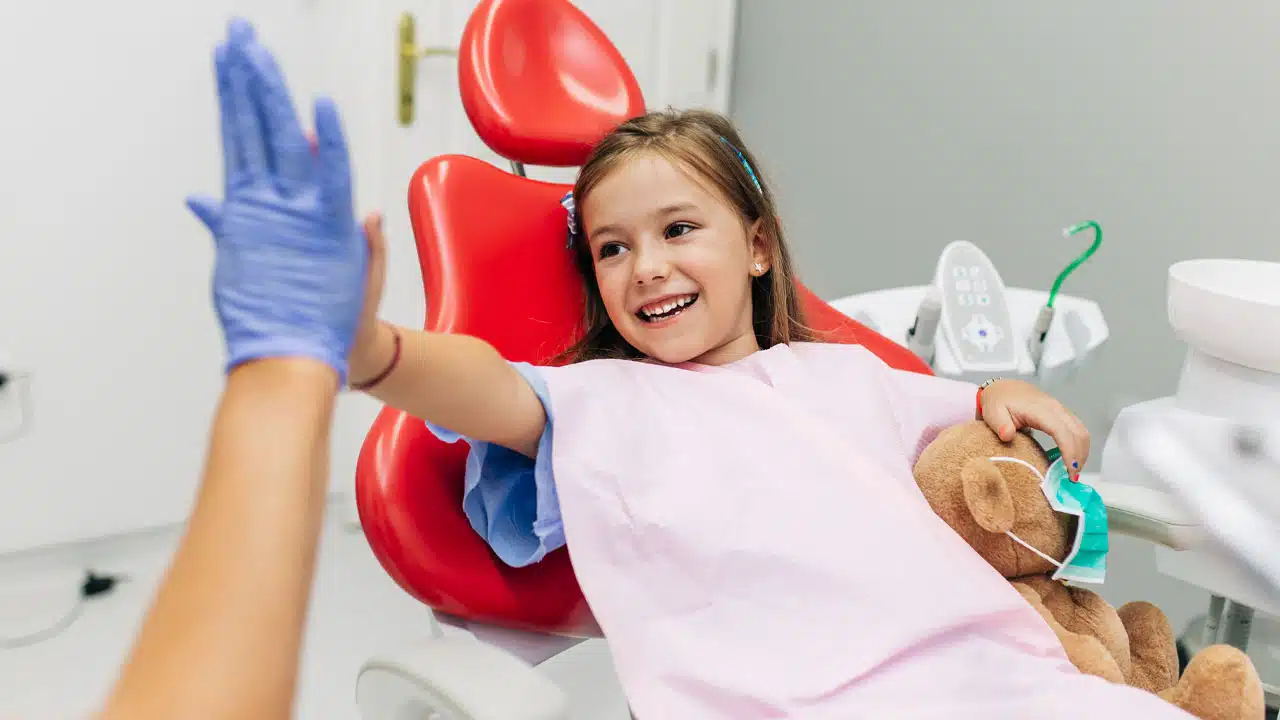
Watching your child’s dental journey unfold can be a mix of joy and nerves. From spotting that first tiny tooth to the gleam of braces, every stage is a big moment in their growing-up story. As parents, our part is guiding them in brushing up on good oral habits and ensuring those dentist appointments are on the calendar.
Explore several major milestones in your child’s dental development and learn what to do at each stage.
The Arrival of the First Tooth
In most babies, their first tooth erupts around six months, but it’s not unusual for some to start as early as three months or as late as one year. Signs your baby might be teething include:
- Increased drooling
- Fussiness and irritability
- Tender or swollen gums
Even before the first tooth appears, you should start cleaning your baby’s gums with a soft, wet washcloth. This helps remove bacteria and gets them used to the feeling of an oral hygiene routine.
The First Dental Visit
The American Academy of Pediatric Dentistry (AAPD) suggests that you take your child for their first dental visit by their first birthday or within six months of the first tooth’s eruption. This visit:
- Helps familiarize your child with the dentist.
- Enables the dentist to check for early signs of potential dental issues.
- Provides parents with guidance on oral care for toddlers.
Brushing and Flossing Habits
Around the age of two or three, most children have a full set of 20 primary teeth. This is the perfect time to instill good oral hygiene habits:
- Use a pea-sized amount of fluoride toothpaste.
- Brush twice a day for two minutes each.
- Begin flossing once teeth touch each other.
Make brushing fun by singing a song, using a timer, or buying a themed toothbrush they love!
The Transition to Permanent Teeth
Children between the ages of 6 and 12 will begin to lose their primary teeth to make way for their permanent dentition. While this is a natural process, it’s essential to:
- Ensure loose teeth fall out on their own. Avoid forcing or pulling a tooth out before it’s ready to prevent damage to the surrounding soft tissue.
- Keep an eye on the alignment and spacing of incoming teeth.
- Maintain regular dental check-ups to monitor progress.
Sealants and Protection
Dental sealants are a protective coating applied to the chewing surfaces of the back teeth. They can prevent decay in the grooves and fissures of these teeth due to food build-up.
Additionally, kids who play contact sports or grind their teeth may need a mouthguard as an extra protective layer. Around the age of six:
- Talk to your dentist about the suitability of sealants for your child.
- Consider getting a custom mouthguard for kids involved in sports to protect against dental injuries.
Orthodontic Treatment and Braces
Many children and teens will require orthodontic treatment to correct misaligned or crowded teeth. Dentists typically evaluate and potentially start treatment between 10 and 14. Remember:
- Early intervention can sometimes reduce the need for more extensive treatment later on.
- There are various options, from traditional metal braces to clear aligners.
- Regular orthodontic check-ups are crucial during this phase.
Set the Stage for Lifelong Dental Health
Each child’s dental journey is unique. By staying informed and maintaining regular dental visits, you can ensure your child’s smile remains healthy and bright throughout their childhood and beyond.
With proactive care and attention to these milestones, you’re laying the foundation for a lifetime of good oral health. Schedule your child’s dental check-up today at Valley Dental Care of Plainfield.